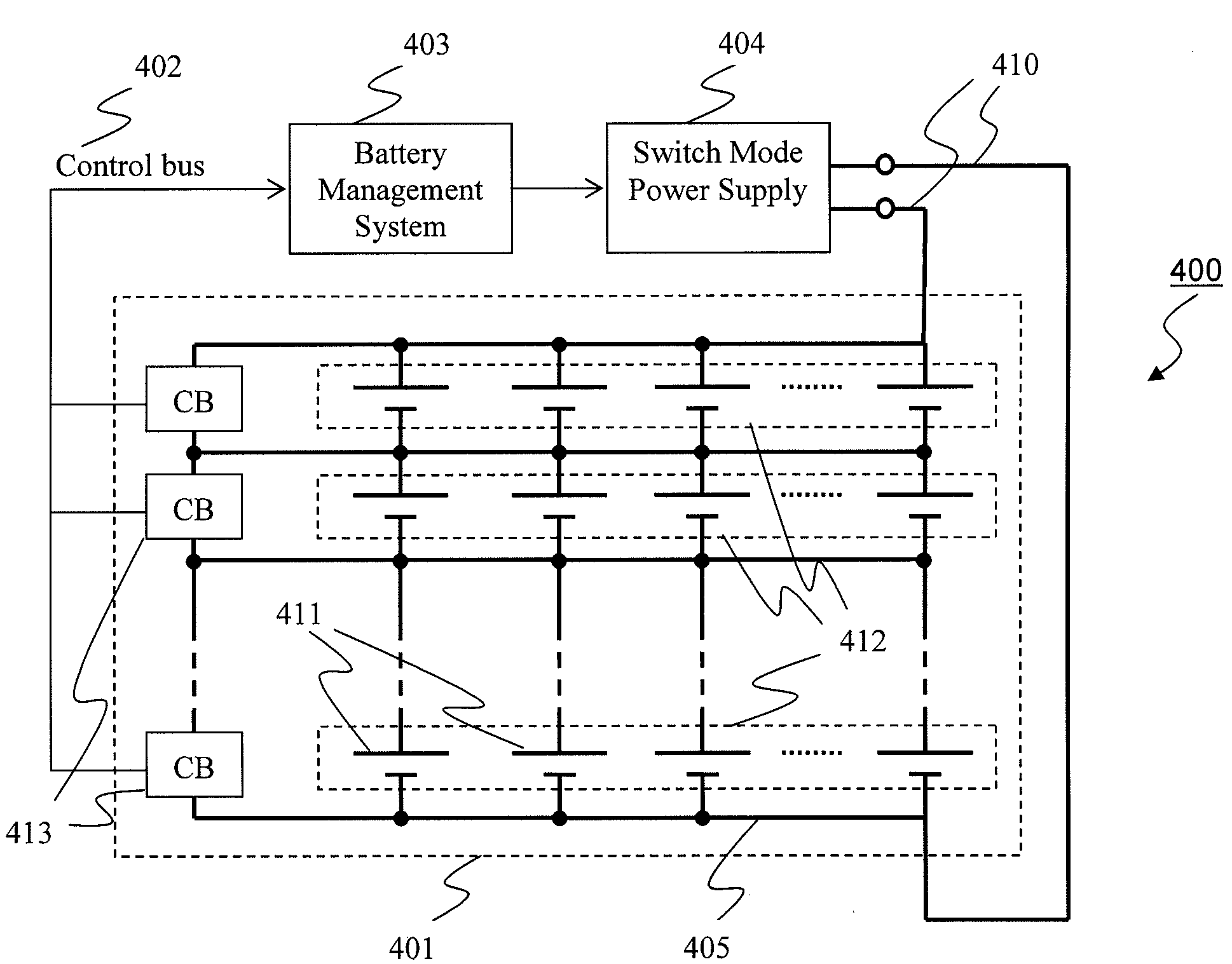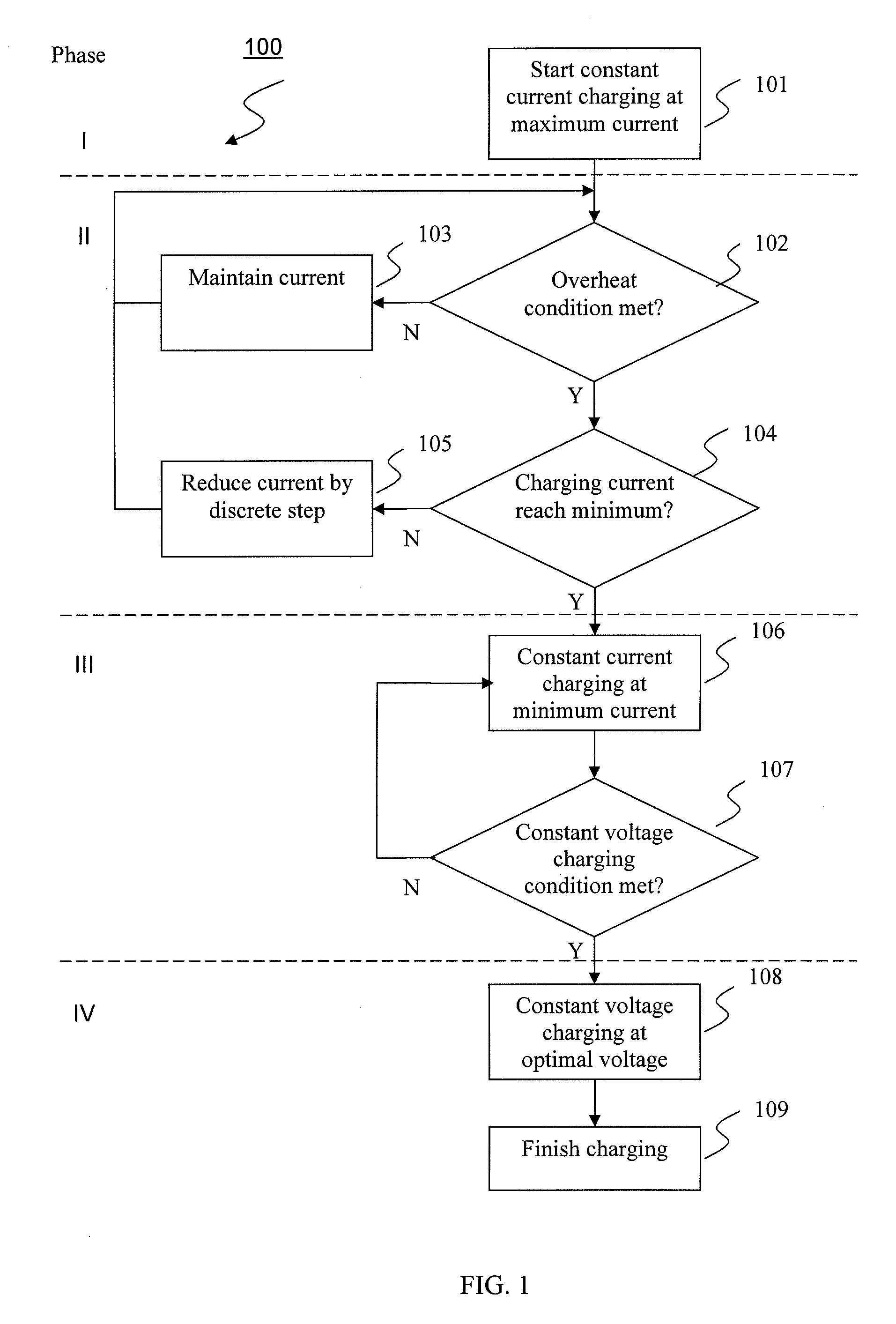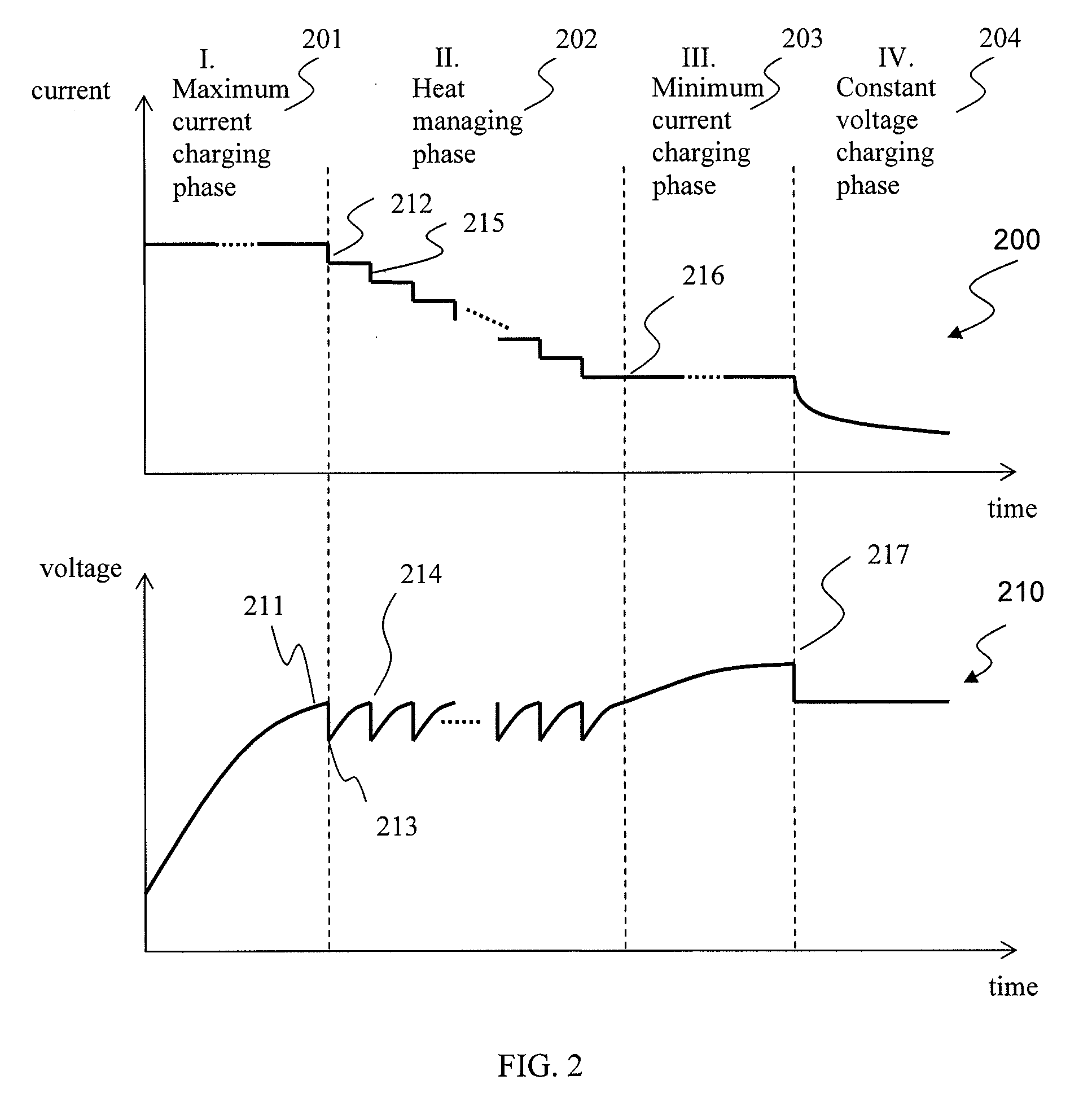Methods and apparatus for battery charging management
a technology of battery array and charging management, which is applied in the direction of battery overheating protection, safety/protection circuit, transportation and packaging, etc., can solve the problems of limited electric voltage and current delivered by the rechargeable battery array, and long charging time of the cells in the battery array. , to achieve the effect of reducing heat generation, effective dissipation of heat, and difficult charging up the cell
- Summary
- Abstract
- Description
- Claims
- Application Information
AI Technical Summary
Benefits of technology
Problems solved by technology
Method used
Image
Examples
Embodiment Construction
[0036]The present invention is described in detail herein in accordance with certain preferred embodiments thereof. To describe fully and clearly the details of the invention, certain descriptive names were given to the various components such as controller, digital signal processor, and frequency multiplier. It should be understood by those skilled in the art that these descriptive terms were given as a way of easily identifying the components in the description, and do not necessary limit the invention to the particular description.
[0037]FIG. 1 is a flow diagram 100 illustrating the battery management system for charging a battery array according to an embodiment of the presently claimed invention. Processing commences in maximum current charging step 101 where an array of battery cells is charged by a constant current. The charging current at this stage is preferred to be as large as possible in order to speed up the charging process but in the meantime not damaging the battery c...
PUM
 Login to View More
Login to View More Abstract
Description
Claims
Application Information
 Login to View More
Login to View More - R&D
- Intellectual Property
- Life Sciences
- Materials
- Tech Scout
- Unparalleled Data Quality
- Higher Quality Content
- 60% Fewer Hallucinations
Browse by: Latest US Patents, China's latest patents, Technical Efficacy Thesaurus, Application Domain, Technology Topic, Popular Technical Reports.
© 2025 PatSnap. All rights reserved.Legal|Privacy policy|Modern Slavery Act Transparency Statement|Sitemap|About US| Contact US: help@patsnap.com



